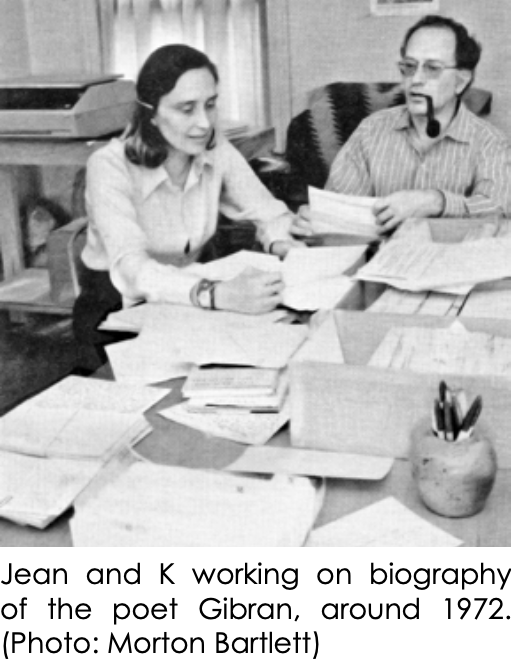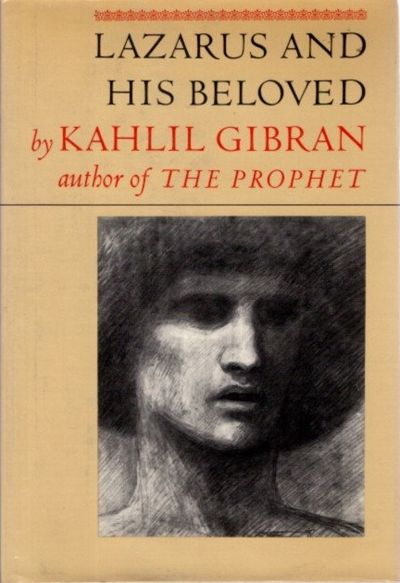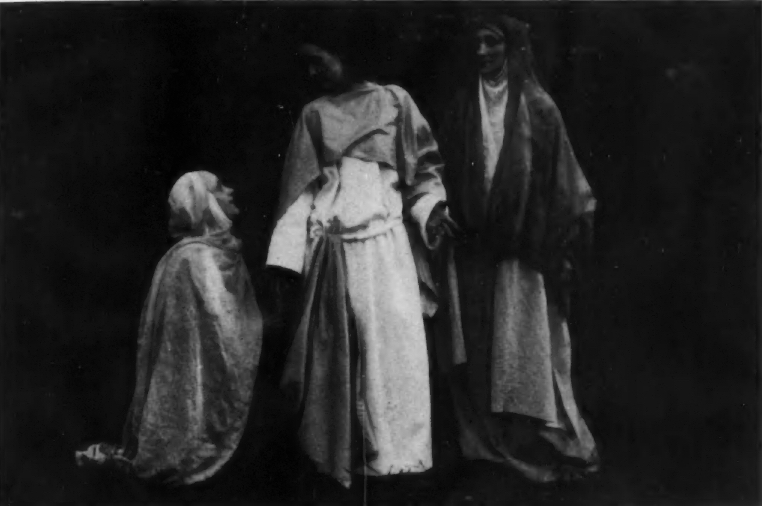By Francesco Medici
Gibran’s one-act theatre play Lazarus and His Beloved was posthumously published only in 1973, more than forty years after its author’s death, by his late cousin and namesake Kahlil (George) Gibran (1922-2008) and the latter’s wife Jean (New York: New York Graphic Society).
death, by his late cousin and namesake Kahlil (George) Gibran (1922-2008) and the latter’s wife Jean (New York: New York Graphic Society).
 As the title implies, the work is based on the biblical story of Jesus’s resurrection of Lazarus and explores his experience after he was raised from the dead by the Nazarene. Gibran depicts a Lazarus who no longer fits in this world, stays on the fringe of daily life and longed to return to the underworld where he had found his perfect, pure love. So Lazarus appears even angry and desperate and he almost curses his master who has brought him back to a life that he feels is limited. This little masterpiece reflects the author’s belief that human beings are embodied spirits who can experience the fullness of existence only when losing their mortal shell. Gibran wrote Lazarus and His Beloved in his last years, but, as already said, for some obscure reason, it remained unpublished during his lifetime. We do not know when and how it occurred that a copy of the manuscript of the work ended up in the hands of a then young but talented theatre director from Wellesley, Massachusetts, whose name was Leighton Rollins. In 1928, at the end of May, he presented the play at the Wellesley Try-Out Theatre as an absolute world première.
As the title implies, the work is based on the biblical story of Jesus’s resurrection of Lazarus and explores his experience after he was raised from the dead by the Nazarene. Gibran depicts a Lazarus who no longer fits in this world, stays on the fringe of daily life and longed to return to the underworld where he had found his perfect, pure love. So Lazarus appears even angry and desperate and he almost curses his master who has brought him back to a life that he feels is limited. This little masterpiece reflects the author’s belief that human beings are embodied spirits who can experience the fullness of existence only when losing their mortal shell. Gibran wrote Lazarus and His Beloved in his last years, but, as already said, for some obscure reason, it remained unpublished during his lifetime. We do not know when and how it occurred that a copy of the manuscript of the work ended up in the hands of a then young but talented theatre director from Wellesley, Massachusetts, whose name was Leighton Rollins. In 1928, at the end of May, he presented the play at the Wellesley Try-Out Theatre as an absolute world première.

It is not known if Gibran attended the performance nor if it was a success with audiences and critics. As far as we know, all that is left of that extraordinary event it is two extremely rare and precious stage photos that probably portray the three actresses who played the roles of Lazarus’s mother and two sisters – Mary and Martha of Bethany (or the unveiled girl could be Lazarus himself?). One photo is kept at the New York Public Library (Billy Rose Theatre Division), and the other was published in the Theatre Arts Monthly (Vol. XIII, July 1929, No. 7, p. 483).


Leighton Rollins was born on August 6, 1900. He was educated in private schools and attended Brown University, where he was involved in theatre. He was active in theatre production, but also was a noted lecturer on theatre and theatre history. He founded the Surry Playhouse in Bar Harbor, Maine, serving as president and managing director. He eventually settled in California, where he died on June 29, 1981, in San Francisco.